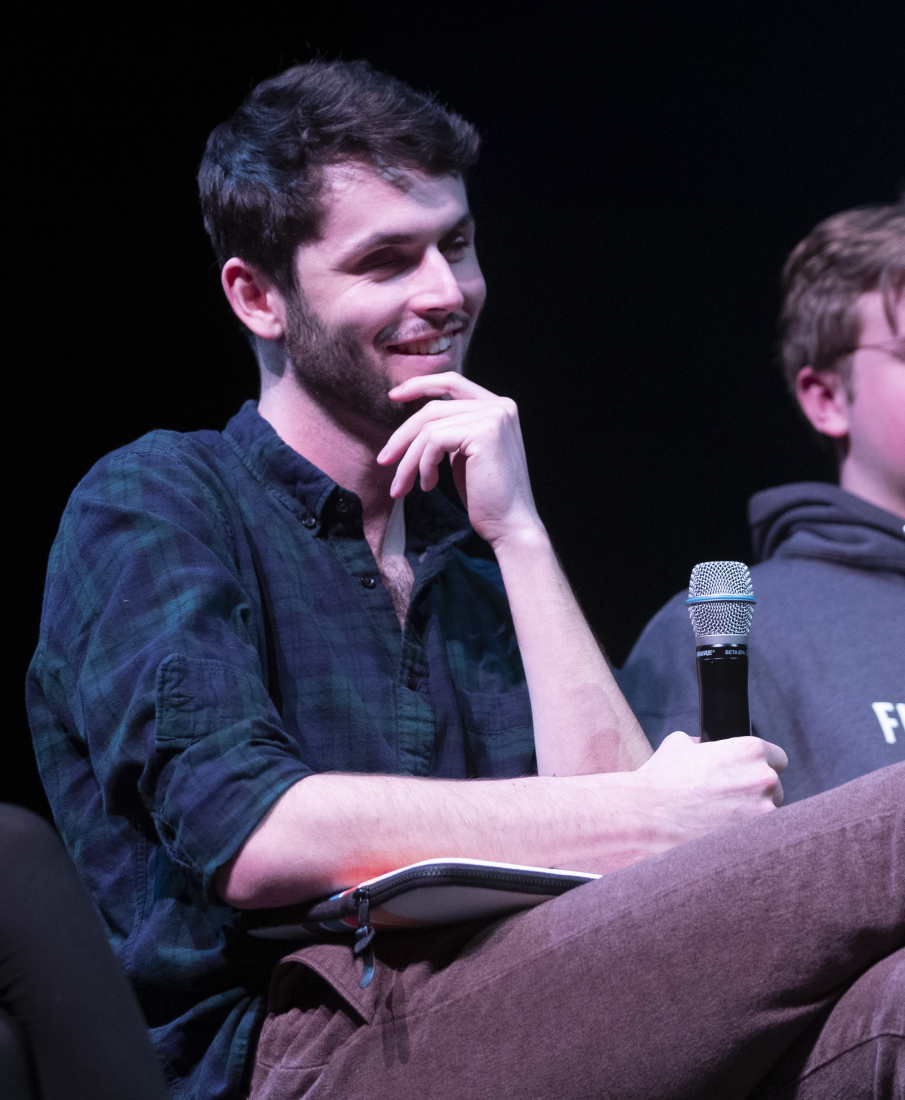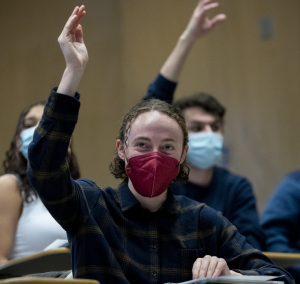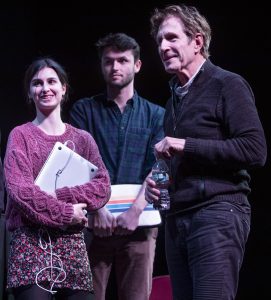By Max Younger (BFF 2022, Bates Class of 2022)
For the 2022 iteration of the Bates Film Festival, one of our primary goals was to rework our mission statement. Before our revisions, the statement was lengthy, spanning two paragraphs and covering an array of subjects. As a class, we discussed what we wanted this festival to be and ultimately settled on a new mission statement. It reads, “The Bates Film Festival harnesses a shared love of film to promote equity and justice, facilitate productive discussions of a wide range of topical issues, and foster an appreciation for the artistry of screen media. Organized, programmed, and executed by Bates College students under the direction of a faculty member, the BFF allows students to witness, engage, and lead civic-minded conversations.” Only after rooting ourselves in that way of thinking were we able to move forward with the planning of the festival. When programming films, we wanted to keep a particular emphasis on screening films that touched on a variety of pertinent issues. Then, in the planning of panels, we focused either on supporting a film we programmed or highlighting a topic that expanded the types of conversations we could have.

When discussing film festivals, it is imperative to identify what exactly the purpose of them is. Daniel Dayan’s piece “Looking for Sundance. The Social Construction of a Film Festival” from The Film Festival Reader highlights the rules and makeup of film festivals. I was particularly interested in his examination of film festival audiences. Dayan explains that a festival is a “collective performance; as an ensemble of behaviours that were referred to norms, watched as spectacles, and submitted to critical evaluation” (47). The idea of a festival being a collective performance was incredibly grounding for me, because our audience is performing behaviors just as much as we are programming around their behavior. It is all one big performance. Moreover, Dayan highlights that “organizers were constantly trying to balance the world of filmmaking and the world of distribution; the emotionality of an occasion and the structural requirements of an industry; the geography of locality and the geometry of networks” (47). For us, our challenge was to balance the quality of films and which ones we could show. Thankfully, due to our festival operating in an academic context, we were not limited by our ticket sales and we could show whatever we felt fit the moment. However, a primary factor in our decision making was acknowledging the makeup of our audience. The Maine audience is incredibly homogenous, which provides an educational opportunity to potentially expose them to new ideas. The Bates audience, while more diverse than the state as a whole, can be insular in its thinking. Keeping both audiences in mind, we set out to program a festival that would reach and engage everyone in meaningful and productive discussion.
“Due to our festival operating in an academic context, we were not limited by our ticket sales and we could show whatever we felt fit the moment. However, a primary factor in our decision making was acknowledging the makeup of our audience.”

For film programming, the class was split into two separate groups, Documentary and Narrative. I had the pleasure of being on the Documentary Team but with that said, it did feel odd that nearly half of the films that were going to be programmed were not viewed by half of the class. I am not entirely sure how this issue can be solved, given the limited amount of time we had to plan the festival. I wonder if both teams could be present during each other’s selection discussions, so they could offer their thoughts. I would not envision the Documentary Team members getting to vote on the Narrative Team’s films, but perhaps allowing them to be a part of the conversation would give everyone a chance to weigh in on all of the films, rather than half. For the most part, the programming of our documentaries went incredibly smoothly. The films we chose covered a vast array of topics and had diverse representation. However, our group was split on one film that talked about important issues but had moments that were upsetting and hard to watch. The question we had to ask ourselves was, “Should we show the film even if it may make some people upset or uncomfortable?” Ultimately, we felt that in order to uphold our mission statement, we would show the film. To us, the subject matter of the film outweighed the risk, and the point of showing it was to engage the audience in a meaningful discussion.
The panel I was tasked with developing was the 90-minute roundtable discussion with legendary Bates graduate John Shea ‘70. What I asked myself first was, “What do I want this panel to accomplish?” I thought that it should act as a vehicle for inspiration and entertainment. With that in mind and with the help of my fellow panelists, we generated questions that were practical but that would also tie back to the Bates experience. I was anxious about working with John! Here I was, an aspiring actor, tasked with moderating a discussion with an incredibly accomplished actor. I had no idea what kind of person he was. I truly had no idea how it was going to go. Thankfully, John is one of the most gracious and generous people I have ever met. It is so clear that he adores Bates and wants nothing more than to help the students in any way he can. Not only that, but it turns out that John is a master storyteller who can captivate an audience. During the talkback, he took forty minutes to answer one question. The thing is, it did not feel long or extraneous! It was wildly entertaining and by the end he found a way to tie it all together and leave us with a lesson. His parting words of “love until you die” have continued to stick with me. I will truly have accomplished something if I am able to embody those words.
“I was anxious about working with John! Here I was, an aspiring actor, tasked with moderating a discussion with an incredibly accomplished actor. . . . Thankfully, John is one of the most gracious and generous people I have ever met. It is so clear that he adores Bates and wants nothing more than to help the students in any way he can.“

Overall, my experience on the BFF Board of Directors was an incredibly positive one. I learned what it took to plan a major entertainment event. I did everything from communicating with sponsors to raising money to reaching out to filmmakers to gain access to their films to generating publicity and hype for the festival. Upon reflection, the only hope I would have going forward would be to increase turnout from the Bates community and beyond. We have created a truly legitimate film festival that showcases brilliant films and provides spaces for discussion. Getting more people to attend would enhance the experience for everyone. The festival fell at an extraordinarily busy time for students, and I wonder if our efforts to advertise were futile due to the time of year. Outside of that, I truly feel like we have helped build something special, and I hope that the buzz surrounding this year’s festival bleeds into the next installment in 2024.
Works Cited
Dayan, Daniel. “Looking for Sundance. The Social Construction of a Film Festival.” The Film Festival Reader, edited by Dina Iordanova, St Andrews Film Studies, 2013, pp. 45-58.






